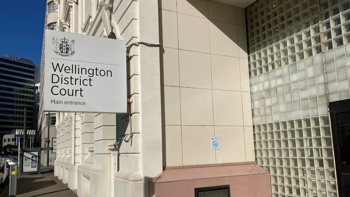New public health guidance for students to go to school and weekly truancy reporting are key parts of the Government’s plan to tackle school truancy.
Prime Minister Christopher Luxon and Associate Education Minister David Seymour announced the plan at Cardinal McKeefry School in Wellington this morning.
But Seymour wants to go further, and intends to bring Act Party policy to Cabinet for approval “at a later date” including:
-Daily attendance reporting from the start of next year
-A “Traffic Light System” setting out the punishments for parents and schools for when a student is not attending - including fines for parents and police referrals
-Making attendance a priority for school boards, which would focus expectations on minimising disruption to students
-Using improved data and analysis to pinpoint the drivers of non-attendance, and to target interventions particularly for chronic non-attenders or students that are not enrolled
By 2030, the Government wants 80 per cent of students to be attending school regularly - defined as attending school more than 90 per cent of the time.
 Prime Minister Christopher Luxon and Associate Education Minister David Seymour announced their truancy plan today. Photo / Mark Mitchell
Prime Minister Christopher Luxon and Associate Education Minister David Seymour announced their truancy plan today. Photo / Mark Mitchell
The latest attendance figure was only 46 per cent - one of the worst on record.
Seymour said the rates in England (75 per cent), the USA (70 per cent), and Australia (49.9 per cent) were al higher.
“If the truancy crisis isn’t addressed, there will be an 80-year long shadow of people who missed out on education when they were young, are less able to work, less able to participate in society, more likely to be on benefits,” he said.
“That’s how serious this is.”
Cabinet has already signed off weekly attendance data to be published from the start of the second week of Term 2 this year, and a communications campaign to be rolled out around the same time.
New public health guidance - though there is currently no detail on what that will be - alludes to Seymour’s comments last week that there were too many students staying home due to illness; the number had doubled since the Covid-19 pandemic began.
“We accept Covid happened but that’s largely subsided now, and yet we still have a doubling of the number of kids kept home for health reasons,” Seymour told RNZ.
“I think we’re going to have to start being a bit clearer about what exactly is a valid reason to stay home.”
Illness was the leading cause of absence in the latest truancy figures, though between 1 and 2.5 per cent of all missed school time was an unjustified absence, logged as being because of holidays or time away in a school term.
For term three last year, only 46 per cent of school pupils attended classes regularly, one of the worst figures on record. Māori and Pacific students had the lowest regular attendance rates at 34 per cent. For Pākehā students, the rate was 48 per cent while for Asian students it was 58 per cent.
One in five Māori students were chronically absent - measured as attendance for 70 per cent or less of the time - while for Pasific students it was 21 per cent, more than double the rate for Pākehā (10 per cent) and Asian students (8 per cent).
And school attendance has been dropping since before the Covid-19 pandemic. For most of the 2010s, between 62 and 69 per cent of students were attending regularly.
A traffic light system for truancy was part of the Act Party’s election policy:
-A green light (up to 10 per cent absence) would require schools to attempt to contact the family on the day of an unjustified absence.
-An orange light (10 to 30 per cent absence) would require the school to hold a meeting with the student and family and develop a plan for more regular attendance.
-A red light (more than 30 per cent truant) would see students referred to the Ministry of Education to make a decision on possible actions - including police referral or a fine for the parent.
Under the Education and Training Act, parents can be convicted and fined if their children are not regularly attending school.
The maximum fine is $30 per day for every school day the student is truant. Parents can be fined up to $300 for a first offence and $3000 for a second or subsequent offence.
But parents cannot be fined for student non-attendance without a court conviction; Act wanted to change that by introducing an infringement notice regime for truancy.
Seymour has also made it clear that parents who cannot afford to pay fines are not the likely targets – but those parents who decide to let their children skip school to go on holidays or trips could well face consequences.
Yesterday, Luxon announced one of the coalition government’s nine targets was to lift the number of children who attended school regularly from 46 per cent to 80 per cent by 2030. Regular school attendance is defined as attending more than 90 per cent of the time.
Derek Cheng is a senior journalist who started at the Herald in 2004. He has worked several stints in the press gallery team and is a former deputy political editor.
This article was originally published on the NZ Herald here.
Take your Radio, Podcasts and Music with you









